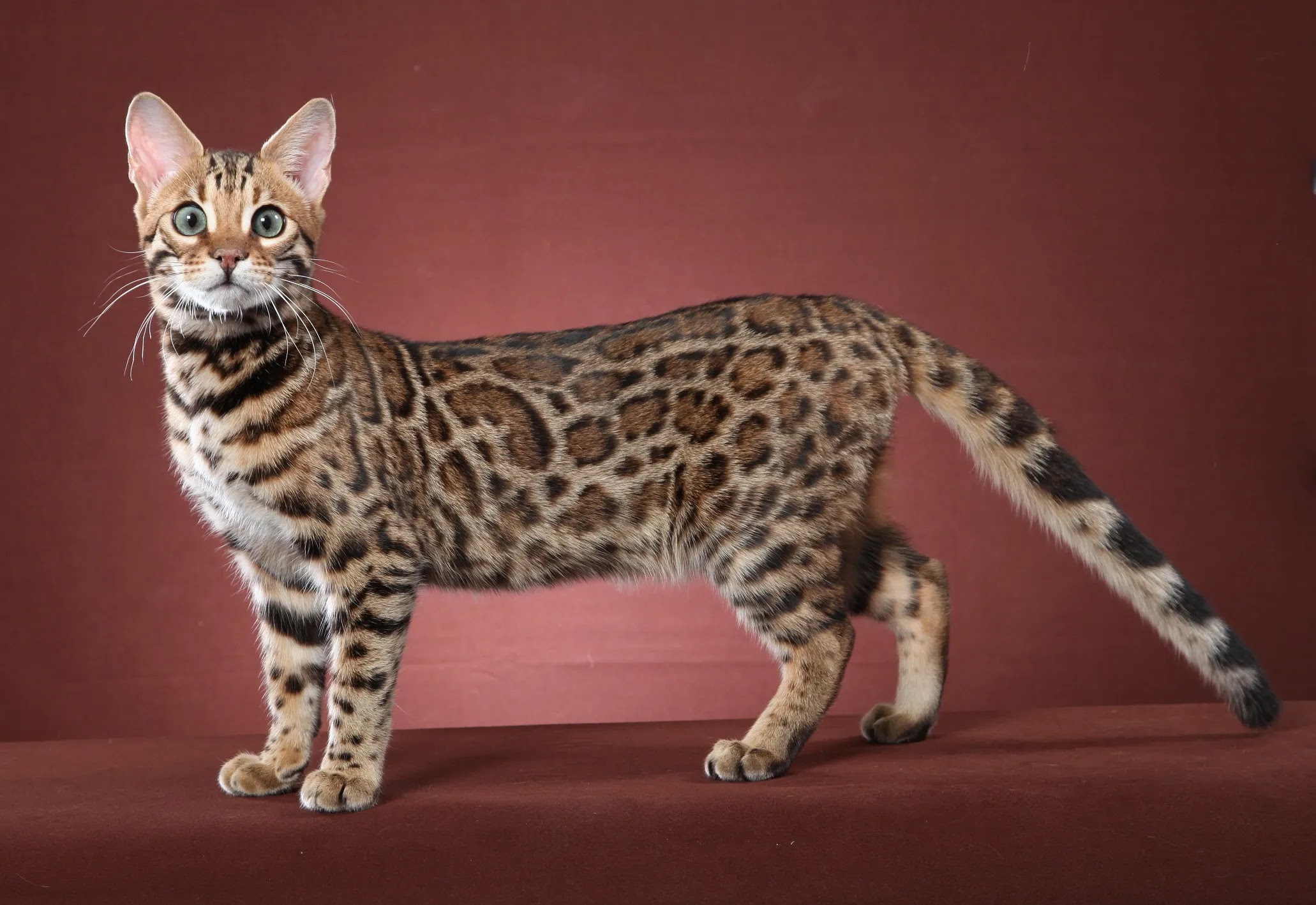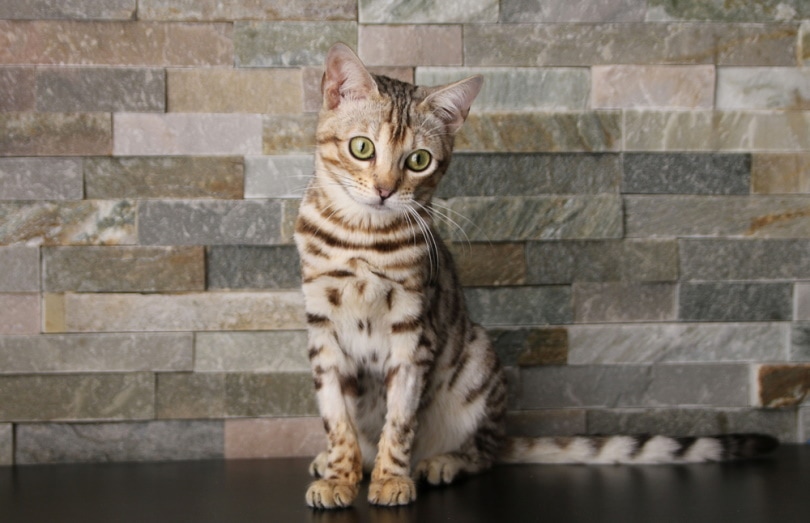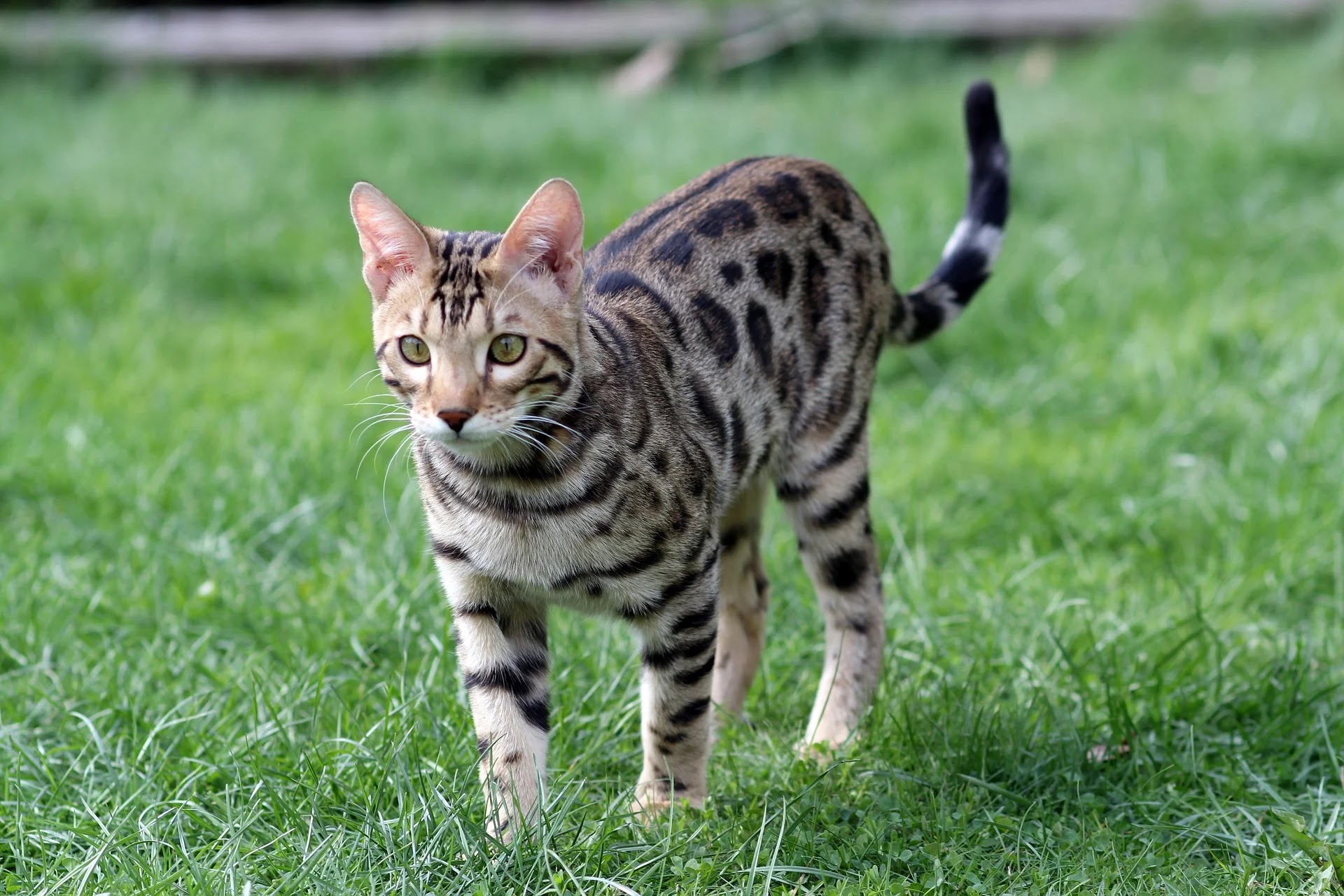Bengal cats are classified into different filial generations (F1, F2, F3, F4, and F5) based on their lineage. The filial generation indicates how many generations the cat is removed from its wild Asian leopard cat ancestor. F1 Bengals have a direct parentage with the Asian leopard cat and therefore possess a high level of wild traits compared to later generations. They often exhibit more muscular builds, large size, and an energetic temperament.
.jpg)
As the generations progress, from F2 to F5, there is a gradual decrease in their wild characteristics as they become more domesticated. By the time they reach the fifth generation (F5), they usually display fewer wild attributes and demonstrate a closer resemblance to regular domestic cats in terms of temperament and appearance. As a potential owner, you must consider this generational classification when choosing a Bengal cat as it determines their level of exotic behavior and interaction requirements. You might also want to check this article I wrote about Savannah cat generations.
The F1 Bengal Cat
- Price: $2,000 to $10,000
- Average Lifespan: 14 and 16 years
The F1 Bengal Cat is a highly sought-after and prized breed known for its striking appearance and unique temperament. Derived from the pairing of an Asian leopard cat with a domestic cat, this first-generation hybrid exhibits wild-like characteristics while maintaining the docility of a domesticated feline. One of the defining features of their temperament is their energy levels, as F1 Bengals are often described as highly active and playful. They possess an innate curiosity and love to explore their surroundings, making them adept climbers and jumpers.
Despite their energetic nature, they also have an affectionate side, readily forming strong bonds with their human companions. However, due to their wild ancestry, they can display more independence compared to traditional house cats. Overall, the F1 Bengal Cat's temperament combines the elegance of a wildcat with the loyalty of a domesticated pet, making them a fascinating addition to any household willing to accommodate their distinctive needs. But unfortunately, F1 Bengals are regulated and sometimes banned in certain states across the US. These states include New York, Iowa, Colorado, Vermont, Massachusetts, New Hampshire, and Alaska. For more info, see
Bengal cat legal and illegal states.
The F2 Bengal Cat
- Price: $1,500 to $5,000
- Average Lifespan: 15 years
The F2 Bengal cat, compared to the F1 generation, displays distinctive traits that stem from its heritage and breeding. While the F1 Bengals are direct descendants of Asian leopard cats and hybridized with domestic cats, the F2 Bengals are second-generation hybrids resulting from crossbreeding an F1 Bengal with a domestic cat. As such, the F2 generation exhibits a higher percentage of domestic cat genes, leading to a slightly more predictable temperament and behavior compared to their wilder predecessors. However, they still retain many wild characteristics, including their striking markings, muscular build, and athleticism.
The F2 Bengal often displays a level of intelligence and curiosity that requires ample mental stimulation and environmental enrichment. Additionally, as a potential owner, you should be prepared for a high-energy pet that requires plenty of physical exercise to remain content and prevent any behavioral issues resulting from boredom or pent-up energy.
Like the F1s, F2 Bengal cats are not legal everywhere in the United States. Due to their exotic heritage and potential for exhibiting wild behaviors, some states and local jurisdictions have imposed restrictions on owning this particular generation of Bengal cats. Therefore, before bringing an F2 Bengal into your home, it is crucial to thoroughly research and familiarize yourself with the laws governing
hybrid cat breeds in your specific geographic area.
The F3 Bengal Cat
- Price: $1,500 – $3,000
- Average Lifespan: 9 to 15 years
As a third-generation offspring of the Asian leopard cat, the F3 Bengal cat possesses unique characteristics that make it highly sought-after among cat enthusiasts. Breeders produce these highly sought-after cats by crossing an F2 Bengal cat with a domestic cat. The F3 Bengal cat, compared to the F2, shows a notable shift in temperament and physical characteristics. As a result of being further removed from their wild ancestry, the F3 Bengals tend to exhibit more domesticated behaviors and are generally easier to handle. While both generations retain the stunning coat pattern that mimics that of a leopard, the F3s typically have a softer pelt with less glittering effect. They also possess a slightly milder expression compared to their F2 counterparts.
Moreover, individuals in the F3 generation often display increased tolerance towards other household pets and children. However, it is important to note that these variations do not compromise the inherent beauty or overall appeal of this breed. In essence, comparing the two generations highlights how each subsequent breeding imparts more domestication and enhances adaptability without compromising the Bengal cat's innate elegance and charm.
The F4 Bengal Cat
- Price: $1,300 to $2,500
- Average Lifespan: 12 to 16 years
The F4 Bengal is four generations removed from its wild ancestor, the Asian leopard cat. They exhibit reduced wild traits while maintaining the striking appearance reminiscent of their wild lineage. This generation is characterized by having great temperament and manageable energy levels, making it an ideal pet for households. While the F3 Bengal shares these traits, the F4 has been found to exhibit fewer wild characteristics, resulting in a friendlier and more social cat. The coat pattern of the F4 Bengal often displays vibrant rosettes with rich coloration, which is highly sought after by breed enthusiasts.
F4 Bengal cats are widely legal to own throughout the United States. However, one notable exception is in New York City. The Big Apple strictly prohibits the ownership of F4 Bengal cats due to concerns about public safety and wildlife preservation. This ban aligns with New York City's efforts to regulate exotic pets, aiming to safeguard its diverse ecosystems and prevent potential harm caused by non-native species.
The F5 Bengal Cat
- Price: $1,200 to $2,000
- Average Lifespan: 12 to 18 years
The F5 Bengal cat is an extraordinary breed that showcases the exotic beauty of its wild ancestors, the Asian leopard cat. As a fifth-generation crossbreed, it exhibits reduced wild tendencies while maintaining distinct physical traits that captivate any feline enthusiast. The F5 Bengal cat, when compared to its predecessor, the F4 Bengal cat, exhibits a slightly different temperament. While both generations are known for their energetic and playful nature, the F5 tends to display a more independent streak. This level of independence often translates into self-sufficiency, as F5 Bengals require less constant attention and interaction than their F4 counterparts. However, this does not imply that the F5 Bengal lacks affection or sociability altogether; rather, they tend to be more reserved in showing these traits.
It is important to note that each individual cat's temperament can vary even within the same generation due to genetics and environmental factors. Therefore, as a prospective owner, you should consider engaging with reputable breeders who can provide accurate insights into specific temperaments of both F4 and F5 Bengal cats before making a decision on which generation aligns better with your lifestyle requirements.
Bengal cats' size compared to traditional house cats'
Bengal cats differ in size compared to traditional house cats. As descendants of the Asian leopard cat, these felines result in a more muscular build and a larger overall size. Bengal cats typically weigh between 8 to 15 pounds, and range in height anywhere from about 13-16 inches tall, reaching a length of 17 to 20 inches from their head to the base of their tail, making them significantly larger than most domestic breeds. Furthermore, their long and lean bodies give Bengal cats an agile and athletic appearance which corresponds with their highly active nature.
In contrast, traditional house cats usually weigh around 7 to 11 pounds and measure approximately 18 inches in length. However, it is important to note that individual variations exist within both breed categories due to factors such as genetics, diet, and exercise levels. Nevertheless, Bengal cats' distinctive size sets them apart from regular house cats and contributes to their unique charm and elegance.
Health Issues In Bengal Cats
Health issues in Bengal cats can vary based on their filial generation. First-generation Bengals, or F1s, possess a higher percentage of wild blood and may exhibit health problems such as hypertrophic cardiomyopathy (HCM) and progressive retinal atrophy (PRA), both common in the ALC population. However, as breeders selectively cross these early-generation cats with domestic breeds like Abyssinians or Egyptian Maus to develop later filial generations, the prevalence of such issues decreases significantly.
By the time Bengals reach F5 or beyond, they often resemble domestic housecats greatly in terms of behavior and health. Nonetheless, it is crucial for Bengal owners to regularly monitor their cats' cardiac health and eyesight throughout their lives while consulting reputable breeders who prioritize genetic testing to ensure healthier offspring.
About the Asian leopard cat: Bengal cats' ancestor
The Asian leopard cat, scientifically known as Prionailurus bengalensis, holds great significance as the ancestor of Bengal cats. Native to Southeast Asia, this
small wild cat possesses striking characteristics that have been selectively bred over time to create the beloved Bengal breed. With its sleek physique and captivating rosette markings, the Asian leopard cat exemplifies an agile predator perfectly adapted for arboreal life. These solitary creatures display a preference for dense forests, using their exceptional climbing skills to hunt prey and secure their territories high above ground level.
While historically more elusive in nature due to habitat loss and illegal pet trade activities, conservation efforts have sought to protect the population of these wildcats. Understanding the biology and behavior of the Asian leopard cat not only sheds light on its importance as an ancestor but also serves as a reminder of our responsibility to ensure its preservation and safeguard the genetic legacy it has bestowed upon the remarkable Bengal cats we now cherish.


.jpg)






.jpg)
